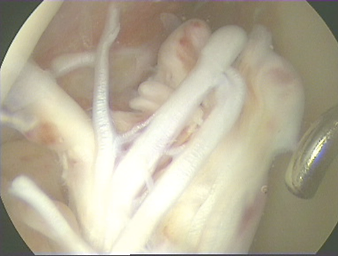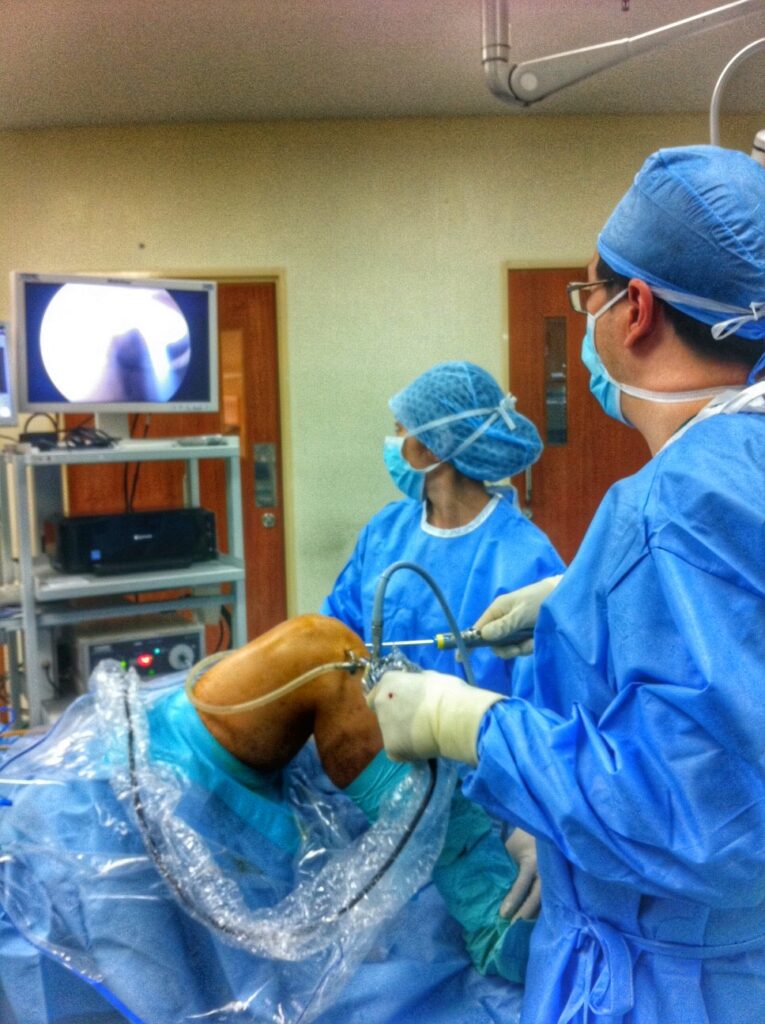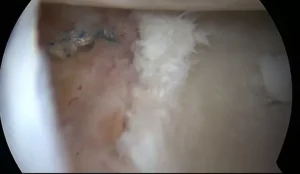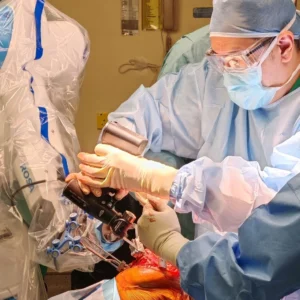
Ruptured ACL seen through the arthroscopic camera
ACL, Meniscus Reconstruction
ACL, PCL and multi-ligament surgeries of the knee involves replacing the torn ligaments with tendon grafts, which are usually obtained from the patient’s own thigh. Harvesting these tendons to be used as reconstruction tissues or grafts to replace the torn ACL, PCL etc will not cause any negative effects to the patient’s thigh or knee function. The reconstruction surgeries of the ACL, PCL are performed using arthroscopy (key-hole sized incisions).


Anatomical ACL reconstruction viewed through the arthroscopic camera
The modern method for ACL reconstruction is the anatomical technique. Anatomical techniques take into account the structure of the individual patient’s knee and can identify the most precise position to place the new reconstructed ACL ligament (or tendon of the patient’s thigh). The tendons used for replacement or reconstruction of the new ACL are positioned precisely through anatomical techniques. This allows the patient’s knee to be returned to its normal state. After healing, the new anatomically reconstructed ACL allows the knee to function normally, stably, without looseness. The patient can return to regular exercise with the reconstructed ACL through anatomical techniques.
In addition to returning the knee to its original function, anatomical techniques can preserve the knee cartilage from wear and tear (calcification) in the long term. The results of ACL surgery are anatomically more precise and better than conventional surgery.
Anatomical technique ACL surgery allows for complete restoration of knee function and long-term preservation of knee health.
If the patient has an ora meniscus injury, it can be repaired arthroscopically at the same time as the ACL reconstruction.




